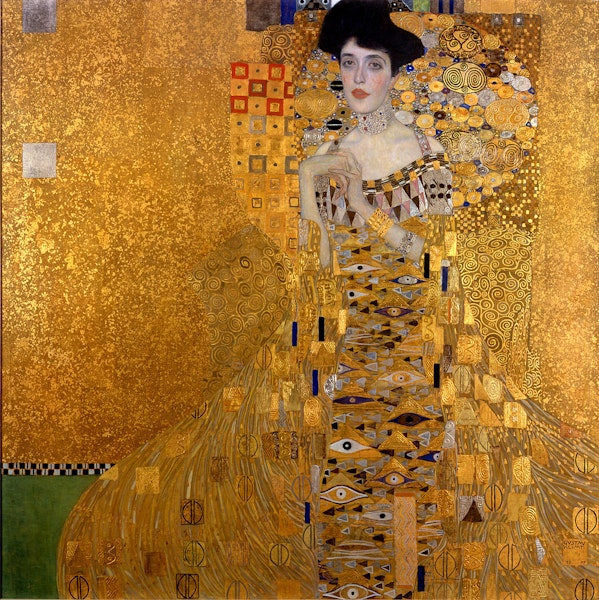
Gustav Klimt, Portrait of Adele Bloch-Bauer I, 1907
What is aestheticism? 3-point summary
💡Puts the highest value on beauty among truth, goodness, and beauty
💡Homosexuality and sexual perversion are often depicted.
💡The depiction itself can be seen in a variety of unique ways depending on the artist.
Concept of Aestheticism
The meaning of this painting is beauty itself. The only reason for the painting's existence (Raison d'être) is that it exists.
(Algernon Swinburne, poet)
This explains the essence of aestheticism. Like Romanticism, aestheticism was established as an idea in literature rather than in art.
Among the literary figures Oscar Wilde Toward the end of the 19th century, this movement became an anti-social movement that took on the appearance of decadence. Aestheticism was also the antithesis of the optimistic progressivism that swept Europe at the time. In other words, it was an assertion to deny the existence of the previous era.
Leading Aestheticist Writers
(1) Aubrey Beardsley
Beardsley Aubrey Beardsley, who was acclaimed as a genius for his devilishly sharp black-and-white pen drawings, died at the age of 25 due to poor health.

Aubrey Beardsley, "Peacock's Fringe," 1893.
(2) Gustave Moreau
Moreau Gustave Moreau painted exclusively in a world of imagination and fantasy, drawing mainly on biblical and Greek mythology as his subject matter.
His works greatly influenced the painters and literary figures of the late 19th century, and he is regarded as a pioneer of symbolism.

Gustave Moreau, Appearance, 1876, Musée d'Orsay
(iii) Odilon Redon
Redon From the time of his first lithograph collection, "In a Dream," Redon produced many works that delved into the world of uncertain dreams and the unconscious, which were questions and issues raised by physiology and science at the time.
These works, such as decapitations and eyeballs, appear to be a group of works with a sense of despair, partly because they are black-and-white prints.
At the same time, however, he also created works with a certain charm, such as plant-like creatures with human faces and laughing spiders with animal-like faces.
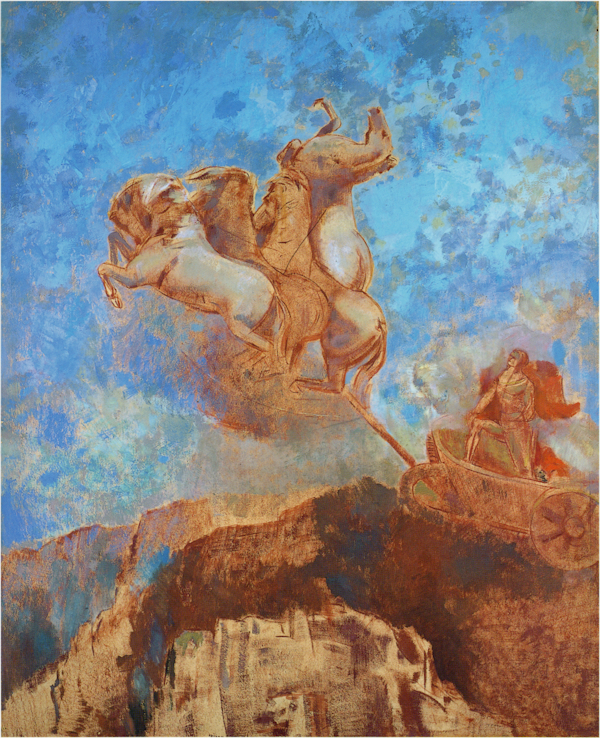
Odilon Redon, Apollo's Chariot, 1909
4) Gustav Klimt
Klimt is a painter who painted many nude and sensual themes.
His paintings are sweet and bewitching eroticism, but at the same time, there is always a hint of death (Thanatos) in them.
Femme Fatale" (femme fatale) is another frequently used theme.
Klimt's works from the so-called "Golden Age," as exemplified by "The Kiss," are richly decorated with gold leaf, creating an opulent atmosphere.
This decorative style, also known as "Jugendstil" in Germany, echoes the revival of decorative arts in France, such as Art Nouveau.
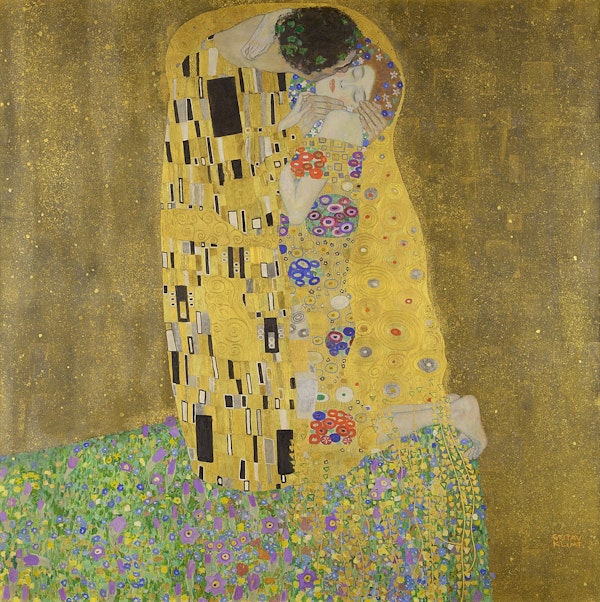
Gustav Klimt, "The Kiss" (1907-08)
5) Egon Schiele
Schiele Schiele was influenced by Symbolism and Expressionism, as well as by Aestheticism and the Vienna Secession, but pursued his own original style of painting.
In addition to his strongly individualistic style, Schiele created numerous paintings of people in deliberately twisted poses, and his style of painting gives viewers a physical and cutaneous shock.
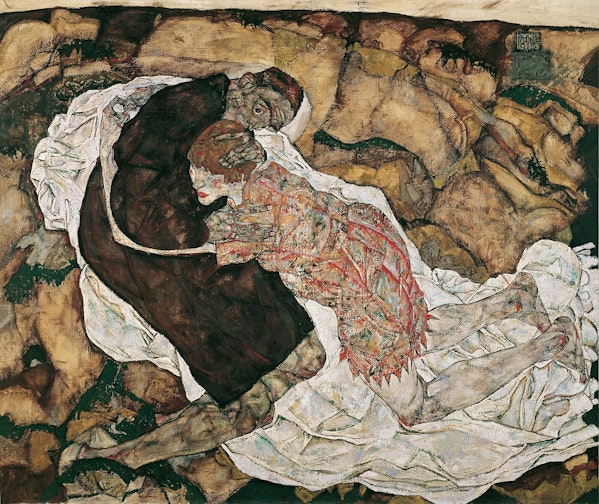
Egon Schiele, Grim Reaper and Woman, 1915
6) Felicien Lops
Lops is a painter and printmaker who also worked in etching and aquatint techniques.
In 1864, Lops met Charles Baudelaire in his later years, and he was left with an impression on him that he would never forget.
He then painted the frontispiece for Baudelaire's Bleak.
This book was a collection of poems from "The Flower of Evil," which had been removed by French censors.
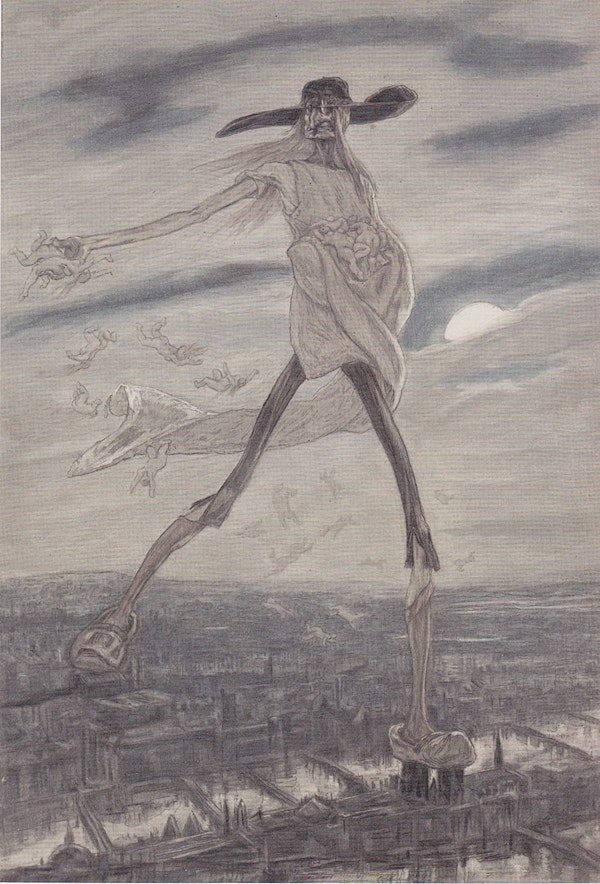
Felician Lops, Satan Sowing Poisoned Barley Seeds, 1882
(vii) James McNeil Whistler.
Whistler was an American painter whose paintings were strongly influenced by Japanese art and the Impressionists.
Rather than reproducing the real world on a two-dimensional plane, he focused on composing a harmonious picture plane through a combination of colors and forms.
His frequent use of musical terms such as "symphony," "nocturne," and "arrangement" in the titles of his works is a reflection of his attitude that painting is not a reproduction of the real world but an autonomous art composed of color and form.
This view of his paintings is similar to that of Impressionists and Cézanne.
In contrast, however, Whistler's use of color is subdued, and many of his works are almost monotone, a departure from the Impressionist style of pursuing vivid effects.

James McNeill Whistler, Gray and Black Arrangement No. 1, Portrait of the Mother, 1871, Musée d'Orsay
Aestheticism and Decadence
Aestheticism is often equated with Satanism and Decadence, other styles and ideas that flourished at the end of the 20th century.
While their antisocial tendencies may be a common denominator, aestheticism itself does not necessarily coincide with Satanism or decadent art.
Rather, in the sense of a revival of sensibility, it can be said that the spirit of aestheticism has its roots in the Renaissance movement of the Middle Ages.
On the other hand, there are certainly elements that have something in common with mysticism.
French Writers Perradin Perradin, a French writer, said, "What beauty produces is the joy of sublimating emotions into ideas.
The expression of the emotions mentioned here has become more liberating and raw than before, and homosexuality, sadism, masochism, and eroticism are often included in the aestheticism style.
It can be said that the grotesqueness and spiritual perversions that are brought to the surface by the pursuit of a kind of ultimate beauty are a good expression of human nature.
Japanese Aestheticists
The trend of aestheticism also influenced Japanese intellectuals, cultural figures, and artists.
In literature, Tanizaki Junichiro, Shibuya Tatsuhiko, Edogawa Rampo, Yumeno Kyusaku, and Mishima Yukio can be considered aestheticists.
Among painters, Hoshinen Tsukioka s "Cruelty Paintings," and Harusame Ito and Harusame Ito's "Blame Painting". Among active artists, there are Kuniyoshi Kaneko and Yoshimasa Murakami Yoshimasa Murakami and Shushi Tateishi and Shushi Tateishi are also active in this field.
Yoshitoshi Tsukioka
Yoshitoshi Tsukioka is known for his unique style of painting on a variety of themes, including historical paintings, paintings of beautiful women, and paintings of battles, but he is especially famous for his "Mucho e" series, also known as "Bloody Yoshitoshi.
The "Mushasho-e" series realistically depicts grotesque scenes such as beheadings of criminals.
His use of glue mixed with dye to make the blood glow and his use of stop-motion techniques to show moments of movement are similar to the manga and gekiga that developed after the Showa period (1926-1989), and he is regarded by some as a pioneer of gekiga.
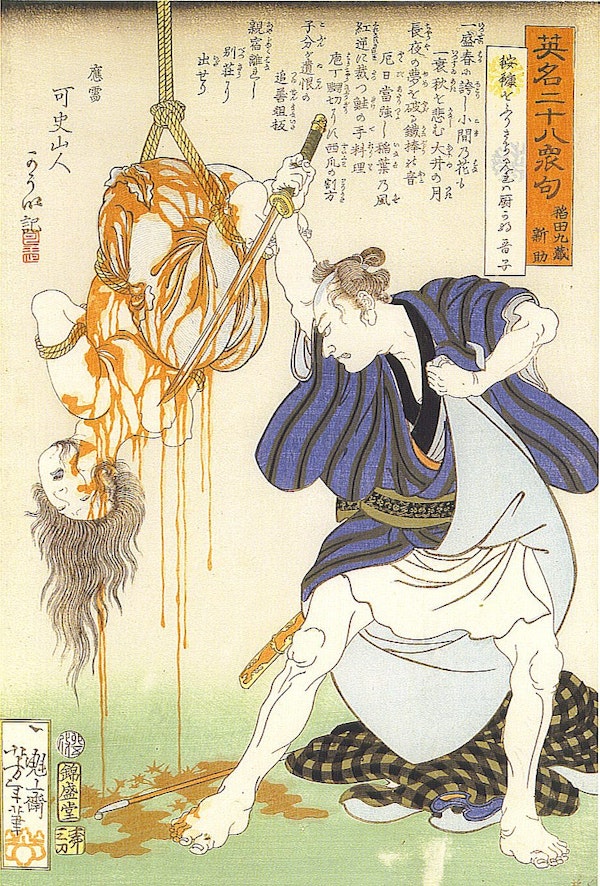
Inada Kyuzo Shinsuke" from "Eimei Nijuhachu" by Hoshinen Tsukioka
(2) Seiu Ito
Seiu Ito was a painter famous for his "blame pictures" and "ghost paintings.
He was good at drawing from an early age, and at the age of 8 became an apprentice to the Rimpa school painter Nozawa Choe. Soon after, at the age of 9, he showed special proclivities such as obsessing over scenes of corporal punishment he saw in plays and the smell of women's hair.
Later on, he conducted research on customs and manners of the Edo period and his life's work on torture and bondage, and in 1928, he wrote a book titled "A Study of Blame," which shows that he was more than just an illustration artist.
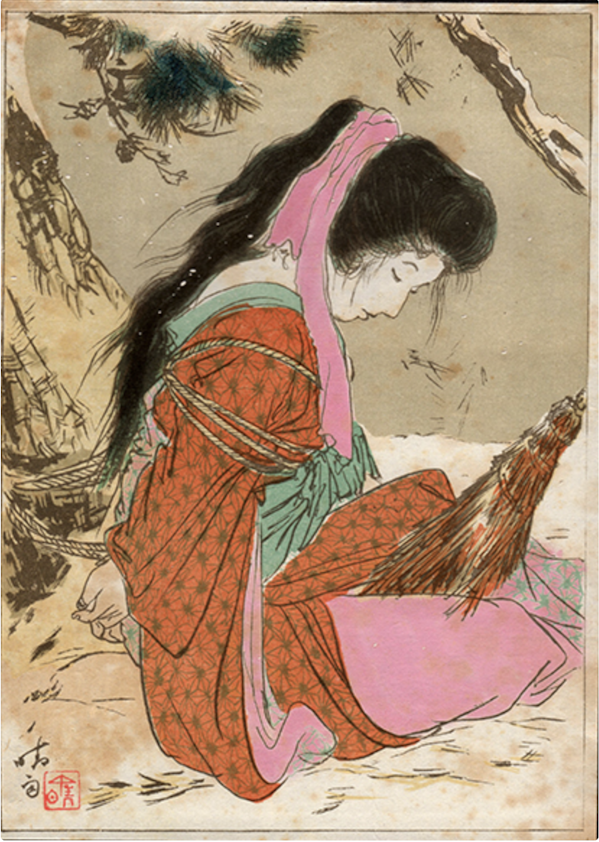
Harusame Ito|Bameshi-e
(3) Kuniyoshi Kaneko
Ito began working in earnest while associating with poets Mutsuro Takahashi and Tatsuhiko Shibusawa, and drew attention for his charming images of young girls for book bindings and illustrations of fantasy novels.
He has created book bindings and illustrations for many magazines and books, including "Fujimi Roman Bunko," "Eureka," "Fujin Koron," and others.
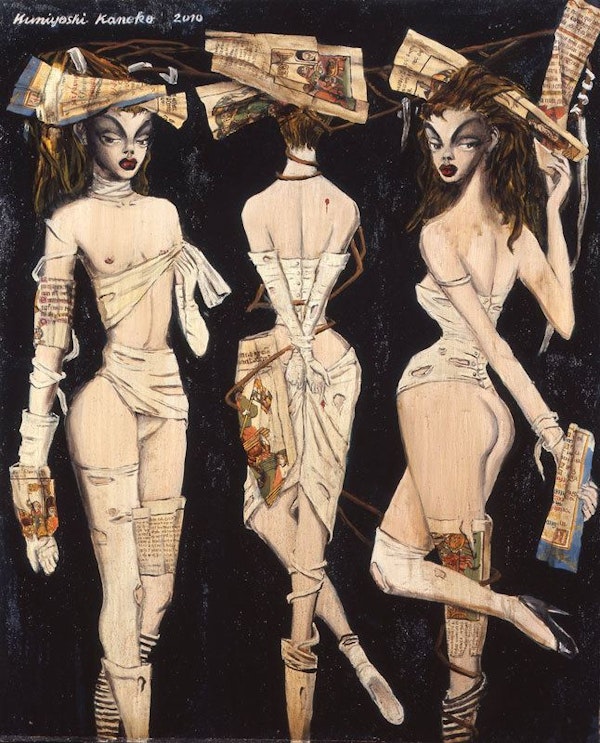
Kuniyoshi Kaneko|The Holy Spirit
4) Yoshimasa Murakami
Murakami is also closely associated with the works of Yukio Mishima and Tatsuhiko Shibuya, and is particularly famous for his work on the binding of Kyusaku Yumeno's "Yapu the Herdsman.
He also worked on the poster for Mishima's play "Ten Days of Chrysanthemums" and the binding for Obe's "The Sea of Fertility.
He is self-taught in painting, and his detail-oriented style gives him an aesthetic air.

Yoshimasa Murakami|Binding art for Kyusaku Yumeno's "Yapu the Herdsman
5) Shushi Tateishi
Tateishi graduated from Tokyo Metropolitan Kodaira High School and then from Tokyo University of the Arts, where he was active in cover art for "Genso Bungaku" and illustrations.
He is known for his fantastic pencil drawings.
He has also produced illustrations for novels by Hideo Nakai, Mitsuhiko Kuze, Hiroko Minagawa, and others. He has illustrated more than 400 books to date.
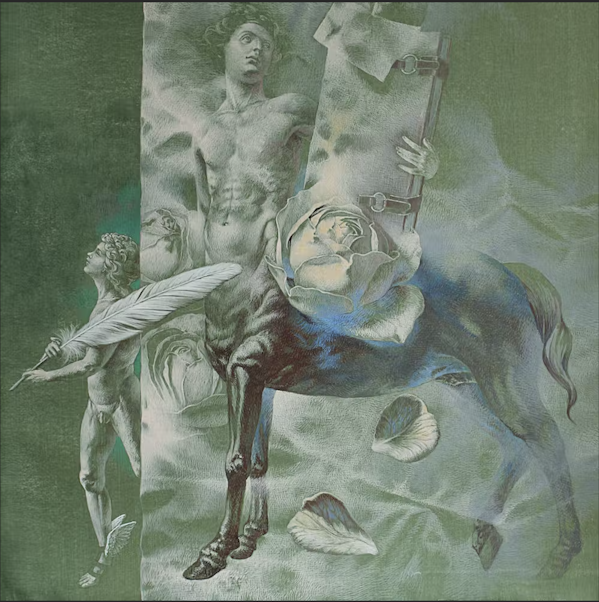
Shushi Tateishi|Centaurus - Autumn Handicraft
Find aestheticism style works at TRiCERA ART
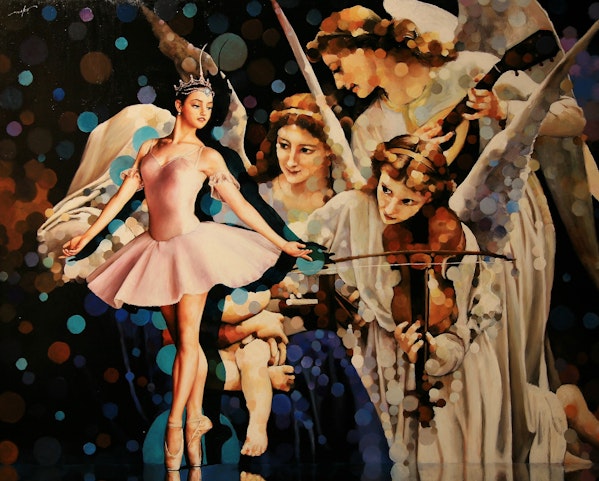
THE FORMATION OF GOD by Makoto Ohneta
W 69.40cm x H 57.20cm|¥750,000
2) The Formation of God by Makoto Ohneta Jochen Cerny

No Title #1963 by Jochen C erny
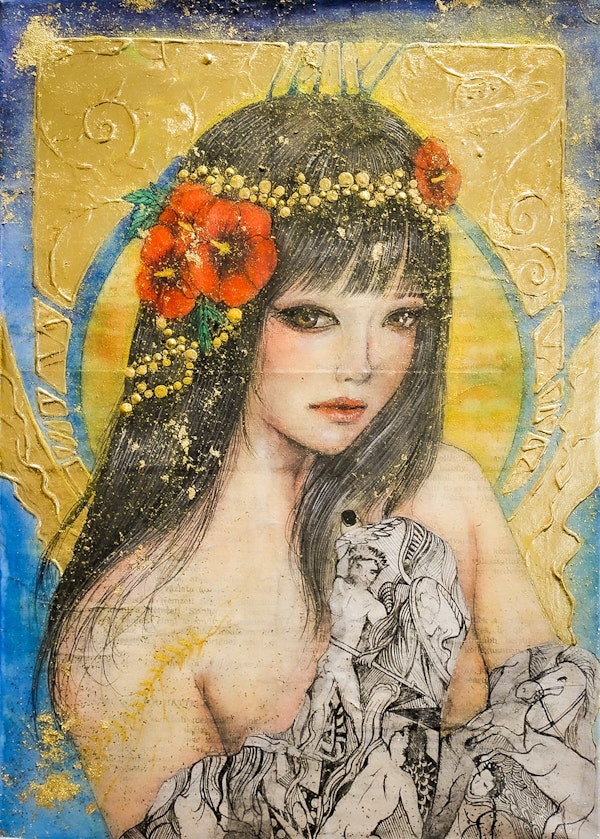
Titan by Yusuke Mor ita
.jpeg?w=600&h=900)
Reflection Zhanar Kuzhakhmetova Zhanar Kuzhakhmetova
W 120.00cm x H 150.00cm|¥39,600
5) Walter Cano Cruz
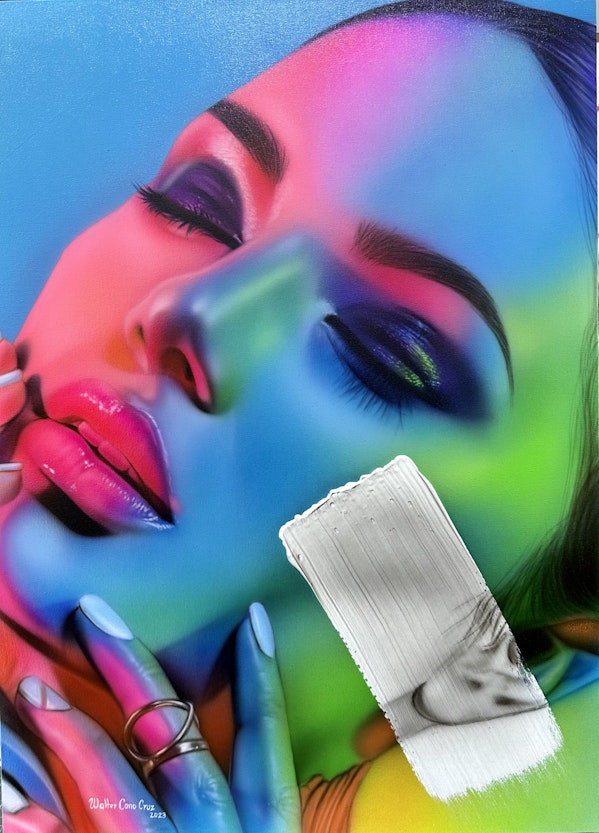
Walcano05 by Walter Cano Cruz
W 50.00cm x H 70.00cm / ¥349,700
See the latest works of TRiCERA ART
TRiCERA ART members enjoy a variety of privileges and preferences.
- Discounts such as members-only secret sales and coupons
- Create your own collection by registering your favorite artists
- Receive updates on popular artists, exhibitions, and events
- Receive a weekly newsletter with selected art
- Personal Assessment to find out what kind of art you like.
Please register as a member for free and receive the latest information.
Free Member Registration